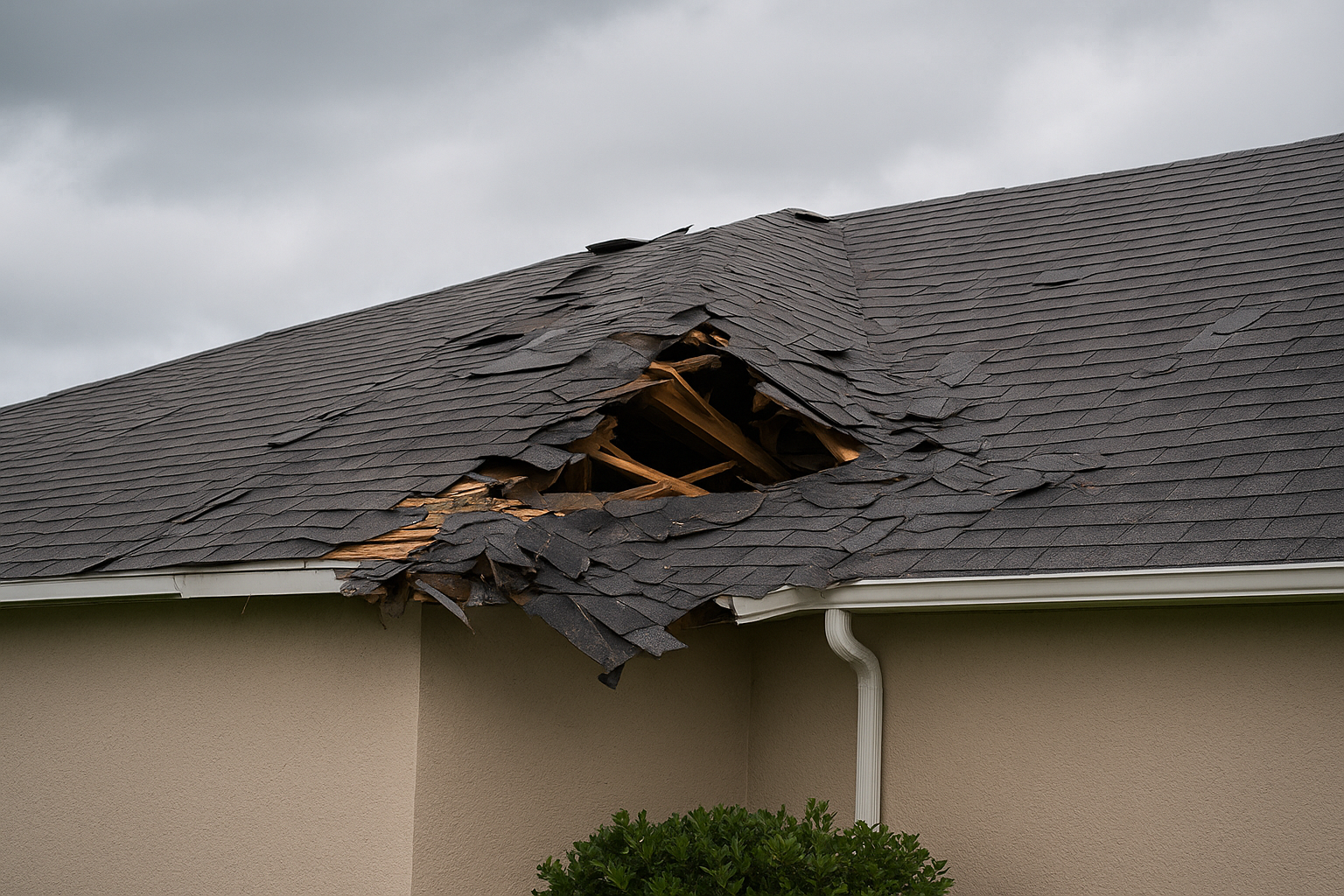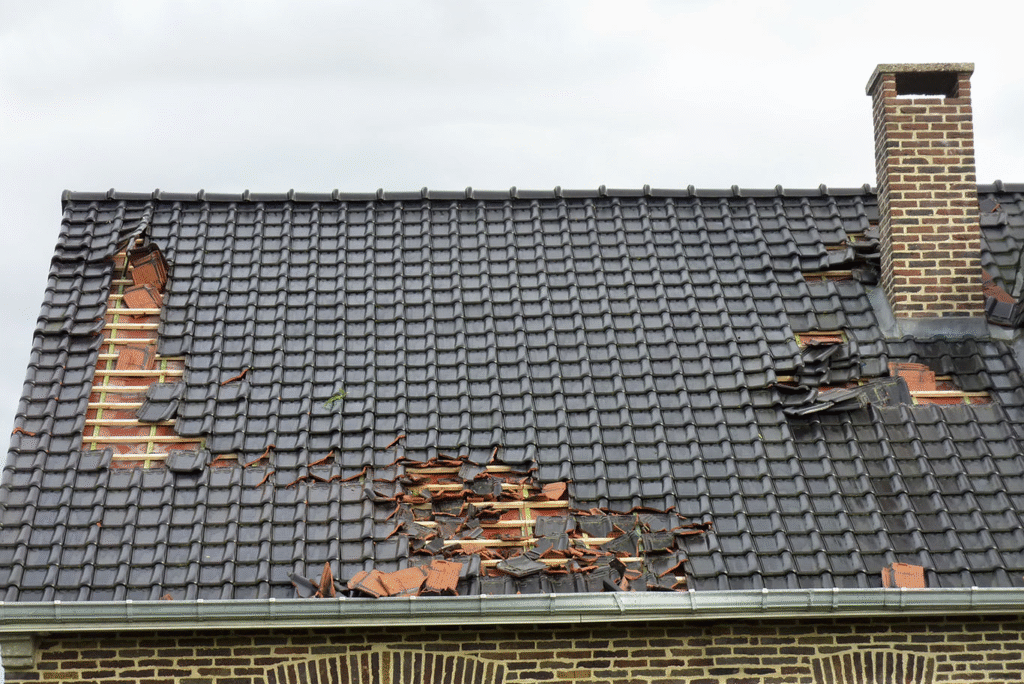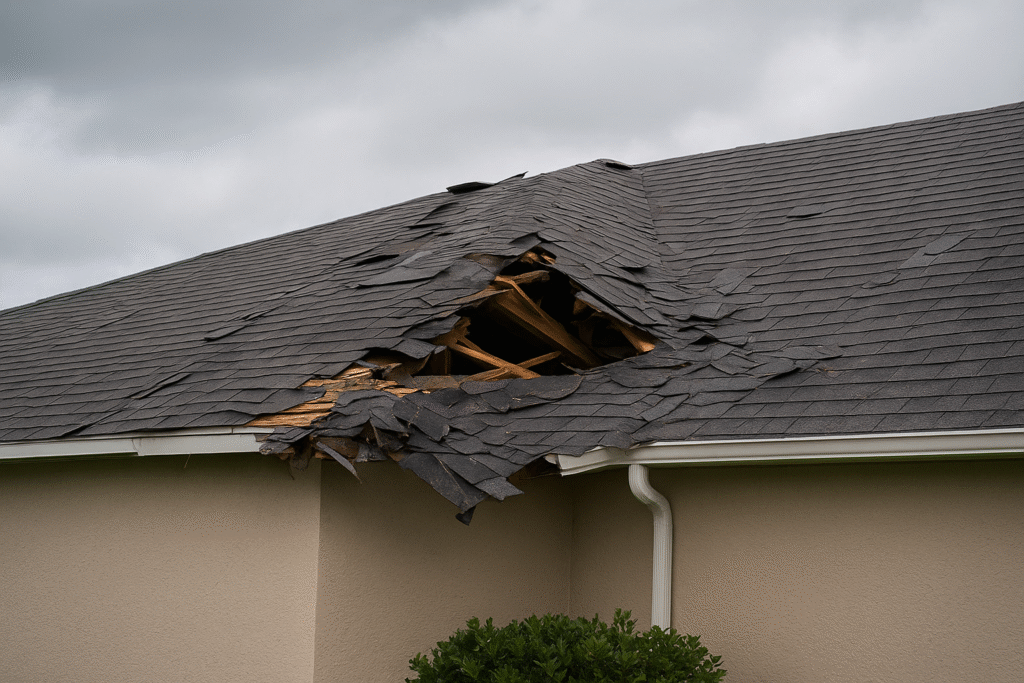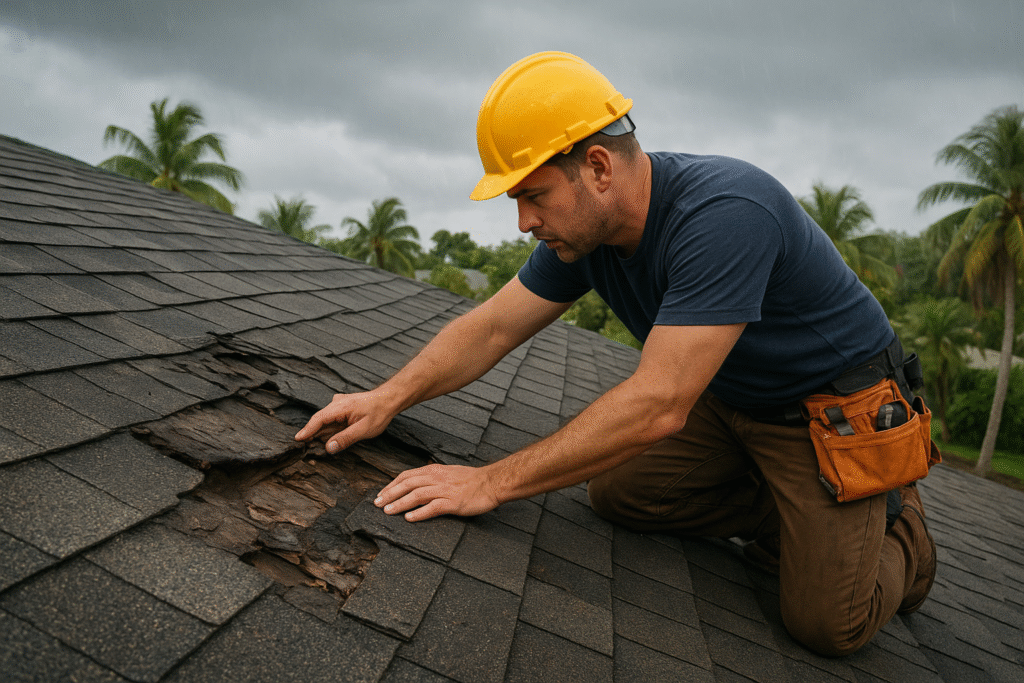How Microbursts Damage Florida Roofs
Posted 9.12.2025 | 6 Minute Read


Florida homeowners know to prepare for hurricanes, but a lesser-known threat can strike with the force of a Category 4 storm in seconds: the microburst.
These sudden, violent downdrafts can produce winds up to 168 mph over a small area (less than 2.5 miles) with no advance warning. Unlike the consistent wind patterns of a hurricane, a microburst slams the ground and radiates outward, creating a unique “starburst” damage pattern that requires a different approach to roof protection and repair.
This guide will explain what microbursts are, the specific damage they cause, and how you can protect your home.
What is a Microburst and How is it Different from a Hurricane?
A microburst is a powerful, concentrated downdraft from a thunderstorm. The simplest way to picture it is to imagine a massive, invisible water balloon bursting on the ground—the force spreads out violently in all directions.
While the wind speeds can be just as high as a major hurricane, the experience and the damage are very different. Here’s a quick comparison to help you understand:
| Feature | Microburst | Hurricane |
| Warning Time | Seconds to minutes | Days |
| Duration | 2-5 minutes of peak winds | Hours |
| Wind Pattern | Straight-line winds radiating from a center point | Sustained, one-directional, and rotational winds |
| Damage Signature | “Starburst” pattern; trees pushed outward | Widespread, one-directional debris field |
Florida’s hot, humid climate creates the perfect conditions for these events, making it one of the most microburst-prone regions in the world.
What Kind of Damage Should I Look For?

When you’re looking at your roof after a severe storm, the damage from a microburst can look chaotic. But it follows a specific pattern caused by intense wind uplift. Knowing what to look for is crucial for your insurance claim and for getting the right repairs.
Common signs of microburst damage include:
- Peeled Back Edges: The wind gets under the edges of shingles, corners, and ridges, lifting them up and often tearing them away. This is where roof failure usually begins.
- Missing Shingles in Patches: Once a few shingles are lifted, the wind has a larger area to grab, leading to a cascade of missing shingles.
- Structural Damage: In severe cases, the uplift can be strong enough to tear the roof decking away from the trusses, leading to a catastrophic failure.
- Punctures from Debris: Unlike the swirling debris of a tornado, microburst debris flies in straight lines, which can cause punctures and granule loss on your shingles.
Are Florida Roofs Built to Withstand Microbursts?
This is a critical question for every homeowner. While Florida’s building codes are strong, they are designed primarily for the sustained winds of a hurricane—not the sudden, violent downward blast of a microburst.
We saw this firsthand after Hurricane Ian. FEMA documented widespread roof failures even in areas where wind speeds were below the official design rating. This is a tough lesson that no roof is truly “hurricane-proof.” The goal isn’t a “storm-proof” roof, but a wind-resistant one, built with quality materials and expert installation that goes beyond the bare minimum.
What are the Best Roofing Materials for a Microburst?
Choosing the right material is your first and best line of defense. Here’s what we recommend for Florida homes:
- Metal Roofing: This is the gold standard. A properly installed standing seam metal roof can withstand winds up to 180 mph. Its interlocking panels are far more resistant to sudden uplift than individual shingles.
- Concrete and Clay Tile: These heavy, durable systems can resist winds of 150-180 mph. However, their performance depends entirely on the quality of the installation, especially the underlayment.
- Impact-Resistant Asphalt Shingles: For homeowners looking for a cost-effective upgrade, Class 4 rated shingles offer excellent protection. They can handle winds of 130-150 mph and are fortified to resist damage from flying debris.
The most important takeaway: The quality of the installation is just as crucial as the material. A great product installed poorly will fail. That’s why using modern techniques like ring-shank nails and enhanced fastening patterns is no longer optional—it’s essential for your safety.
What to Expect with Insurance and Repair Costs
Dealing with insurance can be stressful, but there’s some good news when it comes to microbursts. Because they are classified as “windstorms” and not named “hurricanes,” your standard homeowners deductible (often $500 – $2,500) typically applies. This is usually much more manageable than a costly hurricane deductible.
- Minor Repairs: Replacing a few shingles might cost $200 – $800.
- Major Repairs: If the damage is more widespread, expect costs from $1,500 – $5,000.
- Full Replacement: A full roof replacement is a significant investment, ranging from $8,000 for shingles to over $30,000 for high-end tile or metal.
Investing in annual preventive maintenance can help you avoid that major claim. This proactive step can save you thousands in the long run and give you invaluable peace of mind.
Actionable Steps to Protect Your Home
You are not helpless against these storms. Taking these proactive steps can dramatically reduce your risk and keep your home safe.
- Strengthen Your Roof System: When it’s time for a replacement, upgrade to a more wind-resistant material. Ensure your contractor uses modern, code-exceeding installation techniques for all roof protection and repair.
- Manage Your Landscape: Keep tree branches trimmed at least 10 feet from your roof and remove any dead or weak trees that could become dangerous projectiles.
- Schedule Regular Maintenance: A professional annual inspection is the best way to catch small problems like loose shingles or failing sealant before a storm turns them into a disaster.
- Be Prepared: Keep a tarp and the number of a trusted, licensed roofer handy. After a storm, inspect your roof safely from the ground and call for a professional assessment if you see any damage.
Protect Your Home with an Expert Partner

Microbursts are a serious and unpredictable threat, but you don’t have to face them alone. While no roof is indestructible, a system built with superior materials and expert installation offers the best possible defense for your home and family.
At Coastal Roofing of South Florida, we build high-quality roofs that provide security for your home and family. We are here to help you navigate the process, from inspection to installation. Contact us today for a free inspection to assess your roof’s condition and create a plan to keep your home safe, no matter what the Florida skies bring.
Recent Articles
